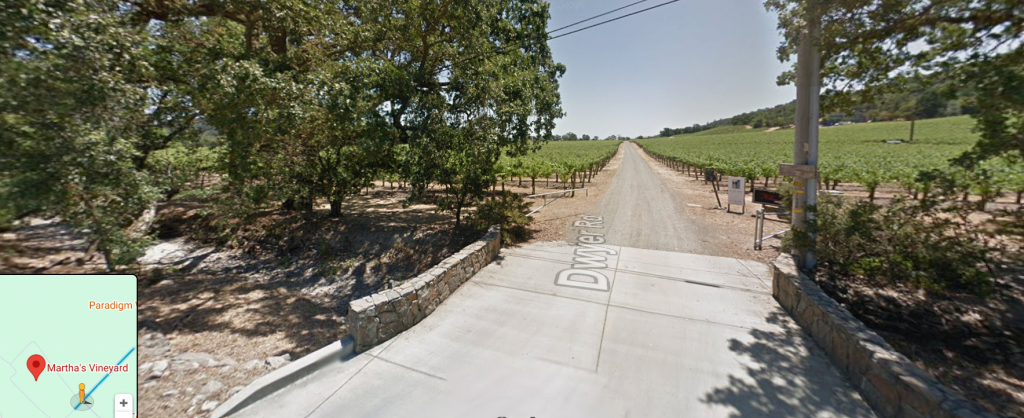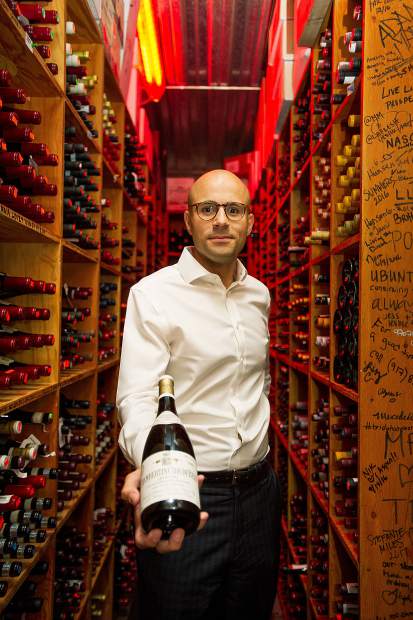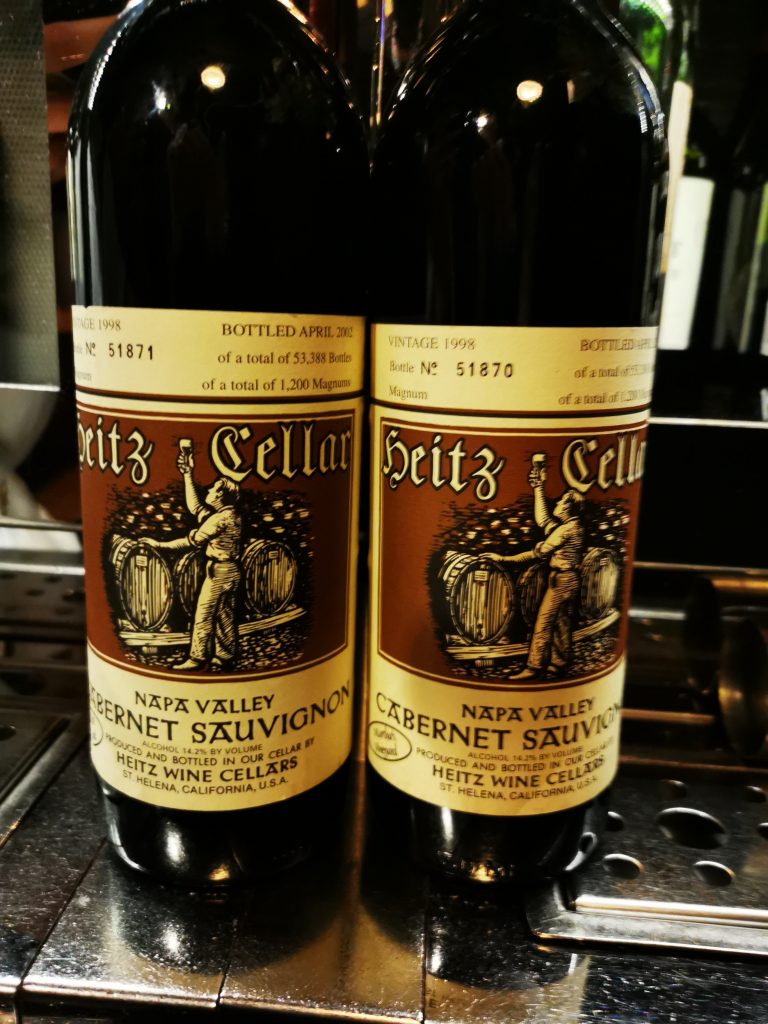Nestled in the heart of Napa Valley, Heitz Cellar has become synonymous with elegance, heritage, and one of California’s most iconic single-vineyard Cabernets—Martha’s Vineyard. This flagship wine, known for its distinctive minty character and exceptional age-worthiness, has helped shape the global perception of American fine wine. But behind the bottle lies a rich story of vision, craftsmanship, and terroir-driven winemaking.

History of the Winery
Founded in 1961 by Joe and Alice Heitz, Heitz Cellar emerged at a pivotal time in Napa’s winemaking evolution. Joe Heitz, originally trained at UC Davis, purchased an 8.5-acre winery on the Silverado Trail from Italian immigrant Leon Brendel. At a time when Napa was still finding its identity, Heitz dared to produce wines that expressed specific sites—a revolutionary idea in California back then.
In 1966, Heitz Cellar released the first vintage of Martha’s Vineyard Cabernet Sauvignon, making it the first single-vineyard designated wine in Napa Valley. This move changed the trajectory of premium American wine, showcasing the potential of site-specific expression in the New World.
The winery remained in family hands for decades, establishing itself as a bastion of traditional Napa winemaking, before being purchased in 2018 by Gaylon Lawrence Jr., who brought a new energy while respecting the estate’s legacy. Today, Heitz Cellar continues to uphold its storied heritage while refining quality under modern leadership.
The People Behind the Wine
At the helm of Heitz Cellar’s renaissance is Carlton McCoy Jr., MS, Managing Partner and Master Sommelier. McCoy has brought a sommelier’s palate and a global perspective to the estate. Under his guidance, Heitz has undergone a quiet revolution—restructuring vineyard management, refining cellar techniques, and emphasizing organic practices.

Winemaking is led by Brittany Sherwood, Director of Winemaking, who has worked with Heitz since 2012. Sherwood champions a non-interventionist approach, allowing the fruit and site to dictate the character of each wine. The team also includes viticulturist Eric Silva, whose expertise in organic and biodynamic farming practices is instrumental to the estate’s vineyard health.
Together, this team has redefined the potential of legacy Napa wines, seamlessly blending tradition with innovation.
Vineyards & Terroir
Heitz Cellar sources fruit from over 400 acres of certified organic estate vineyards across six distinct sites in Napa Valley. Each vineyard contributes unique characteristics, shaped by varying elevations, soil profiles, and microclimates.
Martha’s Vineyard (Oakville AVA): The crown jewel. Located on the western bench of Oakville, it’s known for its well-drained alluvial soils, cooling influence from the San Pablo Bay, and the unusual presence of Eucalyptus trees, which some believe contribute to the wine’s signature minty aroma.
Trailside Vineyard (Rutherford AVA): Planted along the Silverado Trail, this vineyard benefits from deep, gravelly loam soils and the region’s famed “Rutherford dust”, producing structured, earthy Cabernets.
Linda Falls Vineyard (Howell Mountain AVA): A rugged, high-elevation site offering small berries and concentrated flavors. Wines from here exhibit darker fruit, firmer tannins, and mountain spice.
Ink Grade Vineyard (Howell Mountain AVA): One of Napa’s steepest and most remote vineyard sites, offering volcanic soils and intense solar exposure, yielding wines with depth and minerality.
Heitz Cellar farms all vineyards certified organic, with a growing emphasis on regenerative practices that enhance soil biodiversity and long-term sustainability.
Wine Portfolio
While Martha’s Vineyard Cabernet Sauvignon remains the estate’s flagship, Heitz Cellar boasts a diverse and focused wine portfolio that respects varietal purity and traditional methods.
⭐ Martha’s Vineyard Cabernet Sauvignon
Varietal: 100% Cabernet Sauvignon
Style: Iconic for its minty, eucalyptus note, elegant structure, and long aging potential.
Aging: Typically aged for 3+ years in large oak casks, followed by additional bottle aging before release.
🍷 Trailside Vineyard Cabernet Sauvignon
Varietal: Cabernet Sauvignon
Style: Earthy, plush, and expressive of Rutherford’s unique terroir.
⛰️ Linda Falls Cabernet Sauvignon
Varietal: Cabernet Sauvignon
Style: Bold and complex, with mountain tannins and notes of cassis, graphite, and spice.
🌋 Ink Grade Cabernet Sauvignon
Varietal: Cabernet Sauvignon
Style: Dark-fruited, volcanic intensity, and deep minerality.
🍇 Napa Valley Cabernet Sauvignon
Varietal: Blend from estate vineyards
Style: A classic expression of Napa, approachable yet cellar-worthy.
🥂 Chardonnay & Port
Heitz also produces Chardonnay and a grape brandy-based Port, nodding to its historic portfolio and broader winemaking heritage.
Heitz Cellar offers a serene, vineyard-focused experience just off the Silverado Trail in St. Helena. Tastings are by appointment, with curated flights that include library vintages of Martha’s Vineyard and insights into the estate’s sustainable practices.
📍 Location: 500 Taplin Road, St. Helena, CA 94574
📎 Google Maps: Heitz Cellar on Google Maps
The Tastings

The 1998 vintage of Heitz’s Martha’s Vineyard has aged beautifully, offering a refined and quietly complex expression of Napa Cabernet. In the glass, it shows a mature garnet hue with a soft brick rim. The nose is unmistakably Martha’s — cool eucalyptus and mint layered over dried blackcurrant, cedar, and hints of leather and dried herbs.
On the palate, the wine is smooth and medium-bodied, with gentle, integrated tannins. Flavors of dried plum, dark cherry, tobacco, and forest floor unfold with elegance, framed by a lingering thread of mint that adds lift and freshness. There’s still good acidity keeping it vibrant, and the finish is long, earthy, and quietly compelling.
This is not a bold or flashy wine — it’s subtle, graceful, and very much alive. A lovely reminder of how well classic Napa Cab can age when made with patience and restraint. 92 corked Points